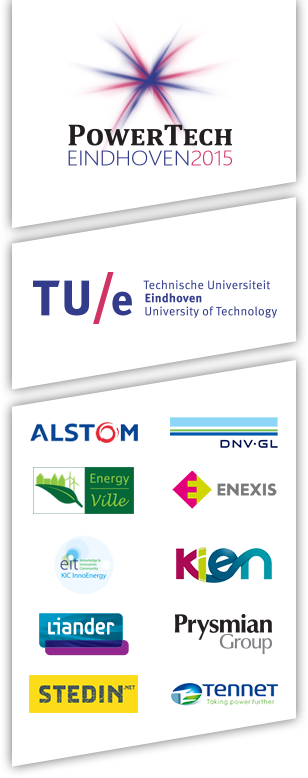Special sessions
29th of June
IEA DSM: Demand Flexibility – Dream or Reality
Demand response as a measure to increase the power system flexibility is technical feasible and well investigated, stipulated from regulatory bodies and supported from the industry. Recent developments from research projects and pilots pave the way to large scale deployment and commercialization. This panel session will present different national and international approaches and discusses how flexibility of demand is making its way into markets and network operation and thereby, considering the challenge to use the flexibility for market as well as grid services in conformity with the unbundling requirements. IEA?DSM Task 17 addresses the current role and potential of flexibility in electricity demand and supply of systems of energy consuming/producing processes in buildings (residential and commercial) equipped with DER (Electric Vehicles, PV, storage, heat pumps) and their impacts on the grid and markets. The detailed program and the registration procedure can be found in the PDF download. (http://www.ieadsm.org/)
Download PDF: IEA DSM
30th of June
GridTech project session
The development of adequate transmission infrastructures and grid-impacting technologies plays more and more a crucial role to foster the integration of renewable energy sources (RES). Towards the achievement of the European Union’s ambitious renewable energy targets for 2020, 2030 and beyond, the main objective of the European IEE project named GridTech (Innovative grid-impacting technologies enabling a clean, efficient and secure electricity system in Europe, http://www.gridtech.eu) is to conduct a fully integrated assessment of new grid-impacting technologies and their implementation into the European electricity system. This will allow comparing different technological options towards the exploitation of the full potential of future electricity production from RES, with the lowest possible total electricity system cost. At the GridTech session at IEEE PowerTech 2015, in addition to project overview, several results of both the pan-European analysis and some regional (Irish, Italian) case studies will be presented and discussed.
Download PDF: GridTech
UMBRELLA, iTesla and GARPUR
UMBRELLA: Innovative tools for the future coordinated and stable operation of the pan-European electricity transmission system
UMBRELLA is developing methods for an innovative toolbox to support the decentralised grid security approach of TSOs. The UMBRELLA toolbox will give the opportunity to intensify TSO cooperation when facing increasing complexity in system operation and volatility caused by growing generation from intermittent renewable energy sources (RES). A decentralized network security
analysis with everyone “on board” using the same tools and database and evaluating solutions in a coordinated and optimized way enhances the security, flexibility and efficiency of the network
operation. The functionalities of the UMBRELLA toolbox are implemented in a prototype and verified by selected test cases.
iTesla: Innovative Tools for Electrical System Security within Large Areas
The iTesla project aims at improving network operations with a new security assessment tool able to cope with increasingly uncertain operating conditions and take advantage of the growing flexibility of the grid. The developed toolbox should support the decision making process for network operation from two days ahead to real time, and will allow TSOs to address network simulations of their own system, of coordinated regional systems or of the whole Pan-European system.
GARPUR: Generally Accepted Reliability Principle with Uncertainty modelling and through probabilistic Risk assessment
Power system reliability management aims to maintain power system performance at a desired level, while minimizing the socio-economic costs of keeping the power system at that performance level. Historically in Europe, network reliability management has been lying on the so-called “N-1” criterion: in case of fault of one relevant element (e.g. one transmission system element, one significant generation element or one significant distribution network element), the elements remaining in operation must be capable of accommodating the new operational situation without violating the network’s operational security limits. Today, the increasing uncertainty of generation due to intermittent energy sources, combined with the opportunities provided e.g. by demand-side management and energy storage, call for imagining new reliability criteria with a better balance between reliability and costs. The GARPUR project designs, develops, assesses and evaluates such new reliability criteria to be progressively implemented over the next decades at a pan-European level, while maximising social welfare.
Download PDF: UMBRELLA, iTesla and GARPUR
1st of July
e-Highway2050: a research project for proposing a robust modular expansion plan till 2050 for the pan-European transmission system
Following the “Modular Development Plan on pan-European Electricity Highways System 2050” elaborated by the European Network of Transmission System Operators for Electricity (ENTSO-E) and in response to the call ENERGY.2012.7.2.1 of the 7th Framework Programme (FP7) of the European Commission, the research project e-Highway2050 (http://www.ehighway2050.eu) was launched in September 2012, with the aim of delivering a Modular Development Plan of the pan-European transmission system at the time horizon 2050 supporting the planning of a pan-European “Electricity Highway System” (EHS) while ensuring the reliable delivery of RES generation and a pan-European market integration.
The project, led by the French transmission system operator (TSO) RTE, involves 28 European partners, with a wide spectrum of skills and knowledge (TSOs, research institutions, consultants and interest associations). The present event aims at showing the main results achieved in the project, that will conclude its activities by end 2015.
Download PDF: e-Highway2050
INCREASE: Facilitating the transition to DSOs with high RES penetration
INCREASE is focusing on how to manage renewable energy sources in LV and MV networks, to provide ancillary services (towards DSO, but also TSOs), in particular voltage control. INCREASE also investigates the regulatory framework, grid code structure and ancillary market mechanisms, and proposes adjustments to facilitate successful provisioning of ancillary services that are necessary for the operation of the electricity grid including flexible market products.
During the INCREASE Mid-term Conference the focus is on how to tackle voltage problems in low and medium voltage grids. Not only will the INCREASE solution be presented there, but also other solutions will be discussed. Speakers of projects such as evolvDSO, IDE4L, DREAM and IGREENGrid will share their views and solutions with the audience.
Download PDF: INCREASE



